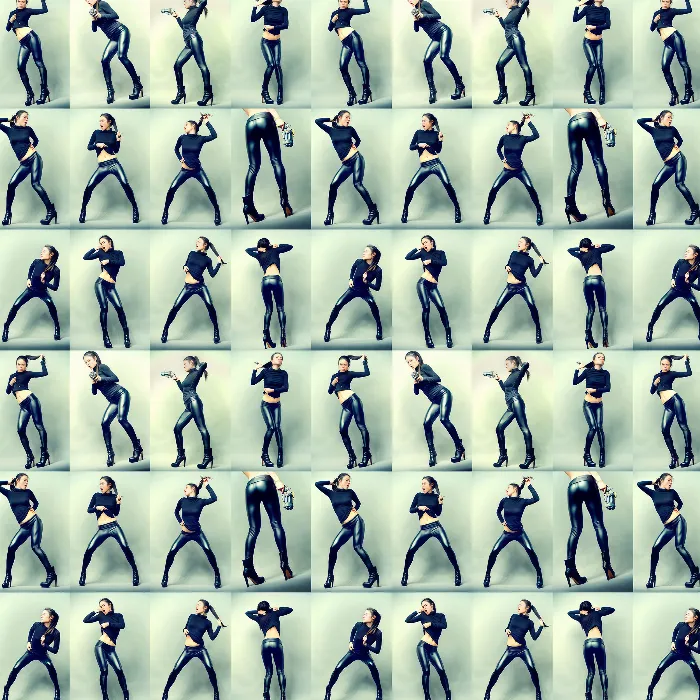Finding suitable models
Figure 3.1: Many photographers know extraordinary locations, have extensive equipment and ideas for great photos - but what is missing are the models who can realize the image ideas together with the photographer. This section is intended to help you find suitable models more easily. Nikon D3X with 2.8/14-24mm Nikkor. 1/200 second, Blender 22, ISO 100.
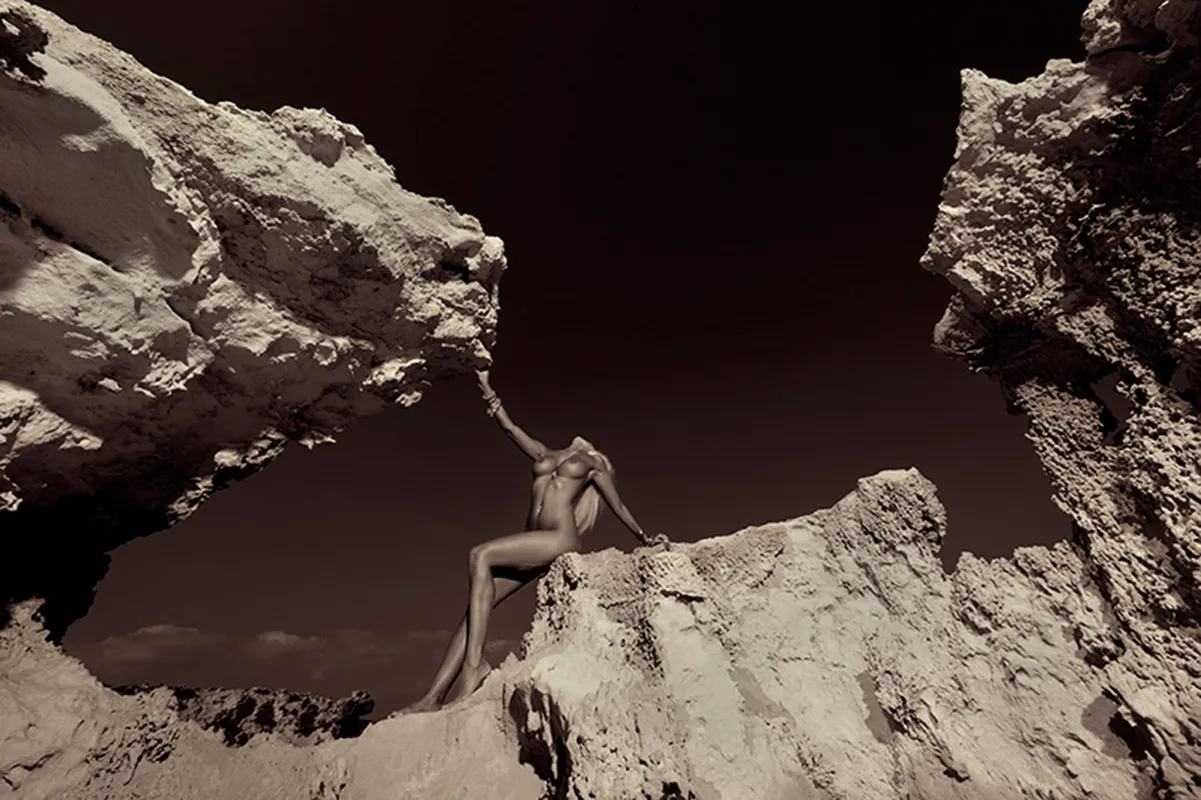
(Photo © Jens Brüggemann - www.jensbrueggemann.de)
Photographing your partner
Photographing your life partner (or, depending on your point of view, your life partner) is the most obvious thing to do. After all, this person is largely at the photographer's disposal (at least in terms of time). However, there are also a few serious disadvantages that make photographing your partner appear in a different light.
- When you photograph your partner, you lack the necessary distance. The very intimate relationship is not good for a professional collaboration as model and photographer. Especially not when it comes to nude or erotic photos.
- If the photos are not successful, this can put a strain on the interpersonal relationship. Blaming each other can be a problem, as can the fact that the photographer is always disappointed when, for example, they come home with photos of other models that may have turned out better. "You didn't try hard enough" could be the accusation from the model's point of view; or "You just look like this" could be the photographer's rebuttal. Neither is a good basis for a harmonious relationship ... It's easier if the model and photographer can simply go their separate ways if things don't go well.
- Small misunderstandings, which can occur at any photo shoot, can escalate into a "state affair". You can quickly become impatient with your partner; this can quickly lead to a "marital quarrel", especially when describing the poses.
- It becomes particularly difficult if your partner only shares your enthusiasm for photography to a limited extent; posing in front of the camera is also not everyone's cup of tea. And thirdly, it happens again and again that photos are taken just to do the partner a favor - which then comes across as particularly tortured (because it often is).
- The planned use of the photos can also lead to disagreements later on. Especially if nothing concrete has been agreed beforehand and the photos are then published by the photographer, for example because they are particularly successful - which the model doesn't always like, especially with erotic photos.
- As soon as I pick up the camera, I'm the "boss". I'm used to directing my models in a (nice) commanding tone. But even if I'm nice about it - it is and remains a commanding tone. And that can lead to friction if one of the partners suddenly directs and thinks less as a partner when taking photos than they would otherwise in a relationship (where both partners have equal rights). At best, it is unfamiliar when the partner (with camera in hand) suddenly becomes the "decider". However, if it is perceived as unpleasant, the photo shoot becomes a torture (which you are guaranteed to see in the results!)
There are probably a few more reasons why it is not advisable to photograph your wife or girlfriend (or husband or boyfriend). Only the most important ones are listed here.
Figure 3.2: At the beginning of my career, I photographed my then girlfriend (and now wife) more often. However, I was usually too impatient and the photo shoots sometimes even ended in arguments, so at some point we decided that I should rather photograph other people's models.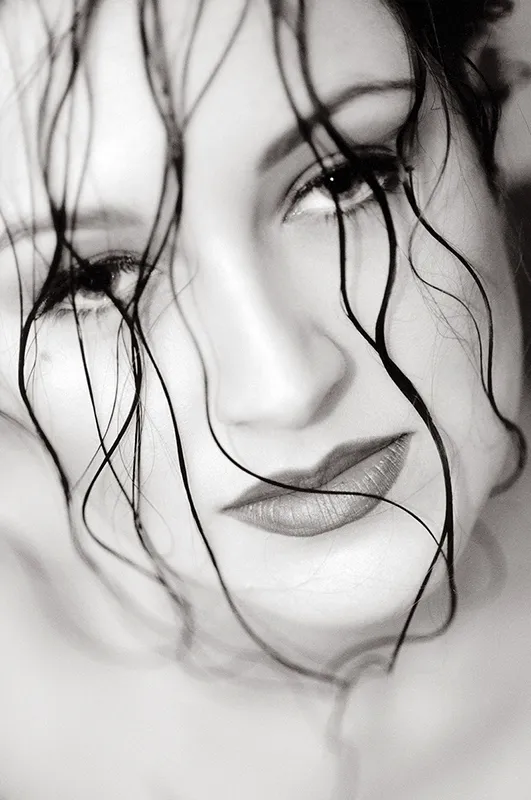
(Photo © Jens Brüggemann - www.jensbrueggemann.de)
Among friends and acquaintances
Everyone has (more or less) social contacts, an environment. Both professionally and privately.
In my opinion, it is less advisable to approach potential models in a professional context. It does depend on the individual case. However, both the rejection of the model and subsequent disagreements if the shoot is successful (for example, over the use of the photos) can lead to a strain on future professional collaboration. At least when it comes to erotic photo shoots, you should therefore refrain from asking the attractive executive secretary whether she would like to model in front of your camera.
It's a different matter if word of your (photographic) skills has gotten around in the company and you are approached by one of the employees. Then, of course, it's perfectly OK to take the photos. However, clarify in detail beforehand (and preferably in writing!) whether and how (and where) the photos you take can be published.
In your private circle of friends, on the other hand, it is of course no problem to ask if someone you know would like to take photos! However, clarify beforehand whether and how the photos may be used!
However, if the potential model is your best friend's girlfriend, you should refrain from taking (nude and erotic) photos if you know that said friend is very jealous! After all, a good friendship is more valuable than good photos; especially as you will still have plenty of opportunities to find and photograph models!
Figure 3.3: Gerriet is the husband of one of my first models. As the contact never broke off, his wife asked me to do a test shoot with him at some point to see if he was suitable as a model. I mean: yes! Definitely! Nikon D3X with 1.4/85mm Nikkor. 1/125 second, Blender 5.6, ISO 100.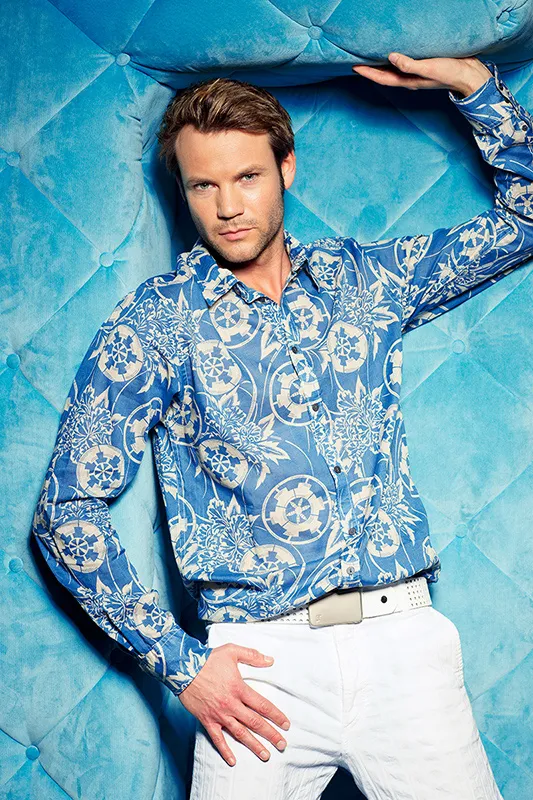
(Photo © Jens Brüggemann - www.jensbrueggemann.de)
Figure 3.4: Child models in particular can be easily recruited from friends and acquaintances. It helps a lot if the photographer knows mom or dad well. Nikon D4 with 1.4/85mm Nikkor. 1/100 second, Blender 2.5, ISO 640.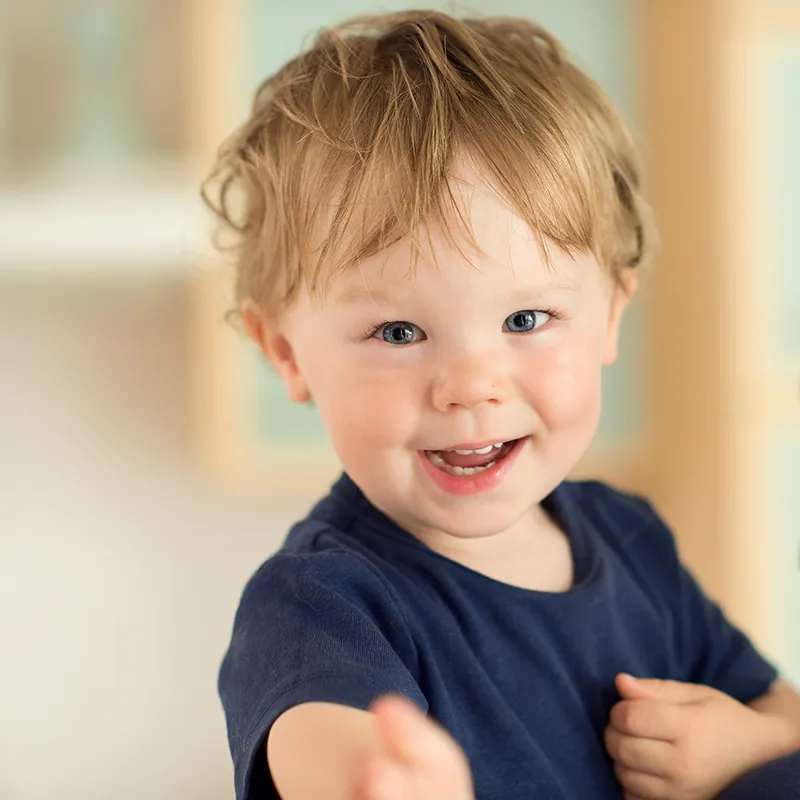
(Photo © Jens Brüggemann - www.jensbrueggemann.de)
If you are a member of a dance or sports club, you should look for models there, because athletes have a very good body awareness and are usually happy to be photographed (because they are proud of how they have shaped their bodies through almost daily training). Athletes are often particularly suitable for nude and erotic photos due to their well-formed bodies.
Figure 3.5: Most athletes not only have well-trained bodies and above-average body control, but also a rather relaxed and natural relationship to their own nudity. Ideal for occasionally standing in front of the camera as a nude model. Nikon D3X with 2.8/105mm Macro Nikkor. 1/125 second, Blender 7.1, ISO 100.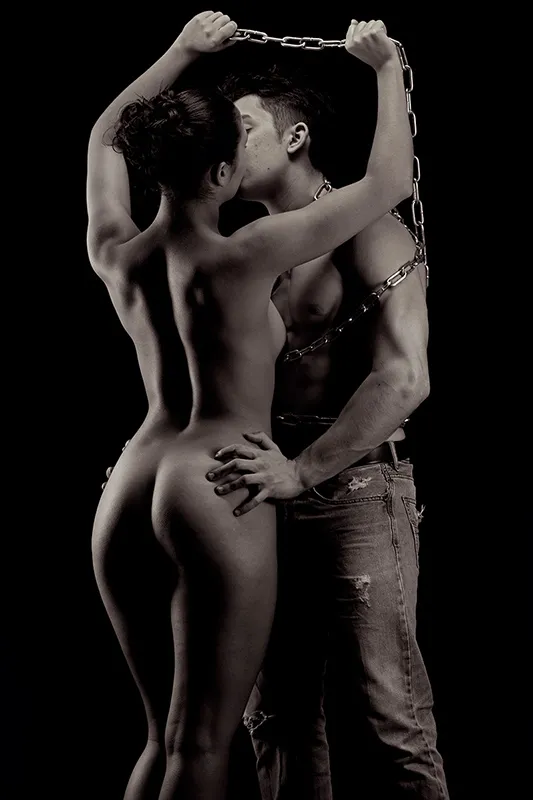
(Photo © Jens Brüggemann - www.jensbrueggemann.de)
On the street, shopping, etc.
In the past, I have "found" the best models myself on the street. When shopping, on the way from A to B, when filling up with gas or at events, for example.
Admittedly, it's not everyone's cup of tea to approach a stranger in public. But why not? Is it a bad thing to ask someone if they would like to work as a model? I don't think so!
Even if I'm looking for models for nude photos, I have no problem saying exactly that.
Note: There are plenty of photographers who enjoy taking nude photos but secretly believe that modeling is something reprehensible. With this attitude, however, they will never shoot exceptionally good photos and will also find it difficult to find new models. As a photographer, you can't find anything "bad" about it - otherwise you're out of place with this topic!
Figure 3.6: I don't specifically look for potential models. But when I'm out and about, for example when I'm shopping, and I see a suitable person, I approach them. For example, I "discovered" Sandra in the perfumery department at Kaufhof. I immediately gave her my business card and after about 3 weeks she got in touch with me. Our test shoot lasted just 15 minutes. It was immediately clear to me that Sandra, who incidentally had no previous camera experience, was very photogenic. Nikon D4 with 2.8/70-200mm Nikkor. 1/100 second, Blender 3.2, ISO 100.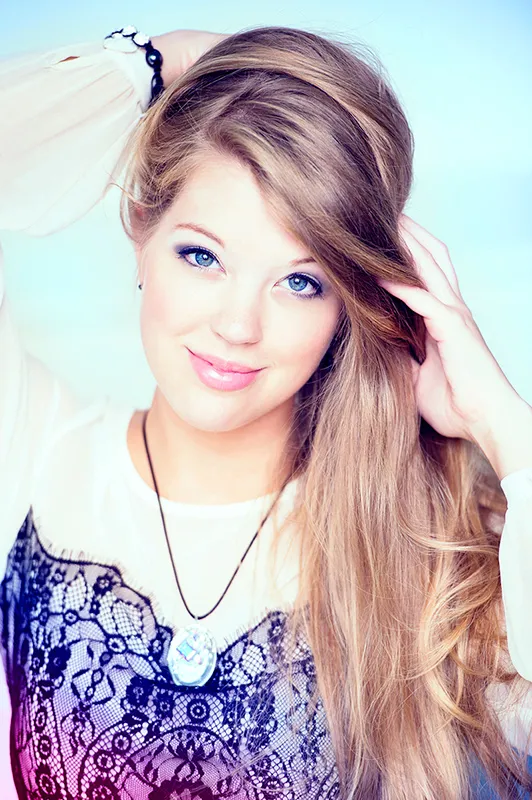
(Photo © Jens Brüggemann - www.jensbrueggemann.de)
I'm often asked how I do it when I approach potential models on the street. Well, I don't have a specific, set "approach". I'm very spontaneous and when I see someone I think is suitable for a photo shoot, I simply approach them. I then briefly introduce myself by name and profession, say that I'm currently looking for new models for various projects and then hand over my business card. It has (very important!) my name, address, telephone and mobile number and my website www.jensbrueggemann.de. On the latter, people can then enquire about me without obligation and view my work.
Now some of you will be thinking "Yes, as a professional photographer with lots of references, it's easy to get new models. But what do I do as a newcomer who is just starting out in model photography?"
There are several arguments against this view:
- Firstly, I also started out as an (amateur) hobby photographer. Even back then, I recruited almost all of my models on the street. So "convincing" the models works even if you only have a few photos to show - as long as the models like them!
- Secondly, I'm actually convinced that it can sometimes be easier to get new models as an amateur photographer, because as a professional photographer I have to insist that every model signs a contract and I can use the photos commercially without restriction. Amateur photographers often don't attach much importance to being able to use the photos commercially or don't intend to publish the photos taken at all. This point is particularly important for nude and erotic photography, as many people would have themselves photographed with little or no clothing - but they do not agree to the publication of the results. But as a professional photographer, I have to insist that I can use the photos, because otherwise I can't do anything with them. And that's the reason why some of the models I've asked to take the photos end up dropping out.
Please note: The "hit rate" (i.e. the percentage of models I approach with whom I actually have a shoot) is quite high! I can't give you exact figures because some people only get in touch with me years later (I've had models contact me for a photo shoot 10 years later!). However, I estimate that more than 50% of the potential models I approach actually come to me for a photo shoot at some point.
Figure 3.7: Of course, approaching strange and extremely attractive young women requires a certain amount of courage, but it's not actually as bad as many photographers imagine. After all, we are paying the person we are approaching a compliment. Indirectly, we're saying nothing more than: "You look great and that's why I'd like to photograph you." Rebecca also took it as a compliment when I approached her at a red light and gave her my business card. She has been a workshop model on several of my photo trips to Ibiza and Andalusia. Nikon D3X with 2.8/105mm macro Nikkor. 1/200 second, Blender 10, ISO 100.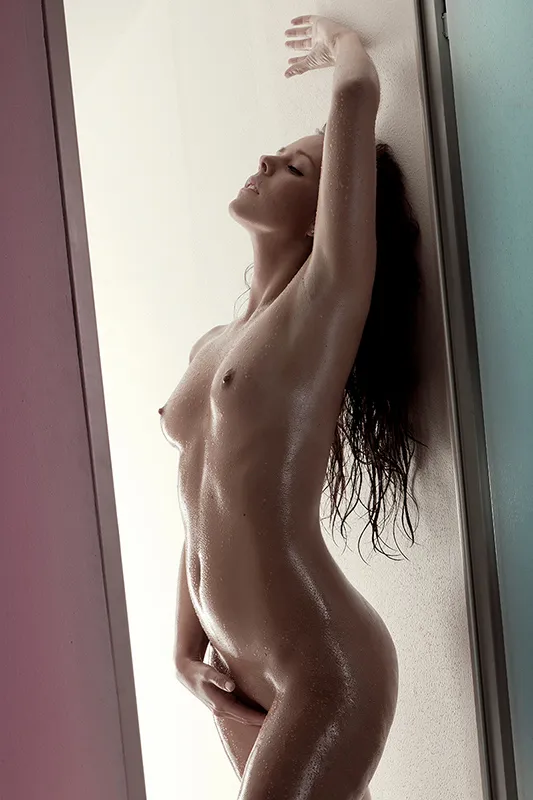
(Photo © Jens Brüggemann - www.jensbrueggemann.de)
Model forums on the Internet
There are several model forums and communities on the Internet. www.model-kartei.de, www.fotocommunity.de, www.one4model.de and www.stylished.de are the best known in Germany.
Many different models can be found there. Professionals as well as beginners, reliable models as well as those who have signed up at some point and continue to exist as "unsubscribed models". Many of them (the "better" ones?) only do "pay shoots" (i.e. they partly earn their living by modeling), some also do "TFP photo shoots" (TFP = time for pictures; the models invest time and want to get photos in return).
If you are more confident about contacting models in the anonymity of the Internet, you are in good hands here.
However, I still prefer to approach people "live" on the street; the hit rate is higher and this method is less time-consuming in my opinion. In addition, this way I have been able to see the people approached in person. In Internet forums, you only see the (often elaborately edited) photos and a more or less meaningful self-portrayal.
Figure 3.8: Christina contacted me via the website www.model-kartei.de (also known as "MK" in photo jargon). This photo is the result of our test photo shoot. And afterwards I immediately booked her as a model for my Andalusia workshop. Nikon D4 with 2.8/70-200mm Nikkor at a focal length of 165mm. 1/125 second, Blender 4.5, ISO 100. I used the Para330 umbrella as the main light from the front with centered focus, because then the light looks very three-dimensional and produces clear shadows.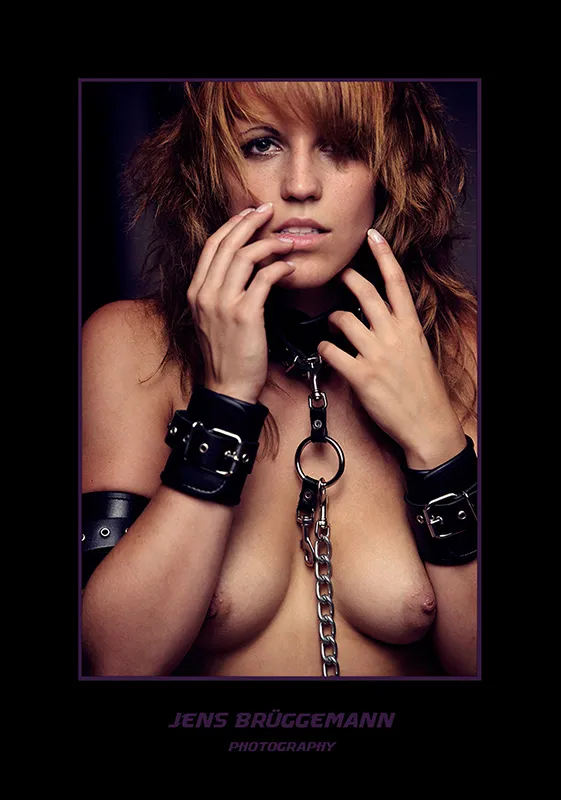
(Photo © Jens Brüggemann - www.jensbrueggemann.de)
At workshops
A good way to get to know new models (and to test their photogenicity, versatility and motivation) is to attend photo workshops. Here you can photograph models for comparatively little money and learn something at the same time!
Figure 3.9: Elida is not only pretty, but also a very talented model. The feeling for effective poses is apparently in her blood. She is also always reliable and punctual, which is why I have used her several times for my advertising photo shoots and workshops. Nikon D4 with 2.8/70-200mm Nikkor. 1/250 second, Blender 16, ISO 200.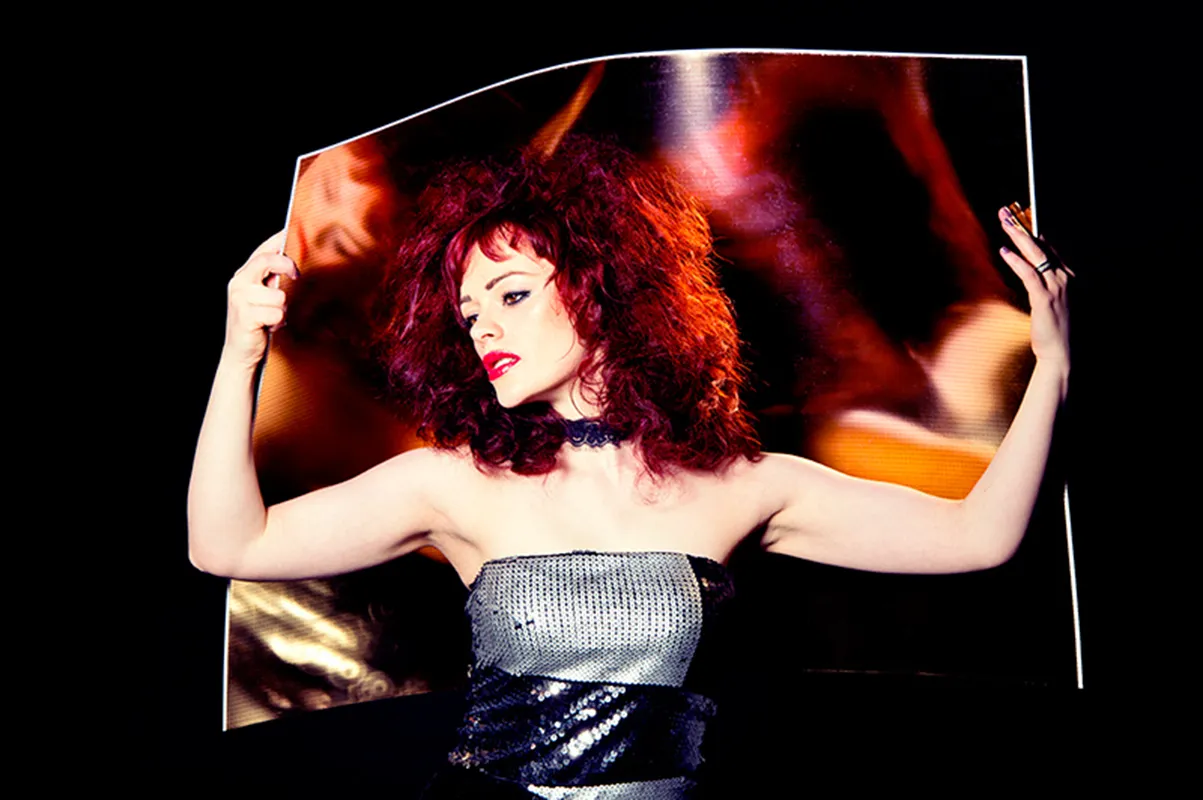
(Photo © Jens Brüggemann - www.jensbrueggemann.de)
"During a photo workshop, the participants have a good opportunity not only to get to know new models, but also to see how the collaboration with the model works. After all, a photo shoot produces great results when the "chemistry" between photographer and model is "right". And to assess whether a future photographic collaboration will be crowned with success, photo workshops are (also) very suitable!
Please note, however, that you can only judge whether one of the workshop models is suitable for further projects if you have the opportunity to actually shoot alone with the model during the workshop. In so-called "pack shoots", i.e. when a whole group of photographers shoot the model at the same time, there are always one or two slightly more experienced participants who then take the lead and guide the model to pose accordingly for all the other photographers. The individual photographer learns nothing at such workshops, because the decisive factor is efficient cooperation with the model, and you can only learn this by being forced to overcome your own shyness and give clear instructions."
From "Akt- und Erotikfotografie", Jens Brüggemann, mitp-Verlag, 2013, 17.95 euros, ISBN 978-3-8266-9482-0
Figure 3.10: Workshops are a good way to get to know new models. As a photographer, you can quickly see from your own photos whether the model is also suitable for other planned photo shoots. Especially during my one-week workshops abroad (here is a snapshot from the Ibiza workshop in 2013), the participants and models can find out in peace whether a collaboration would also work in the longer term. Getting to know each other better through several joint shoots will definitely lead to an increase in the quality of the image results.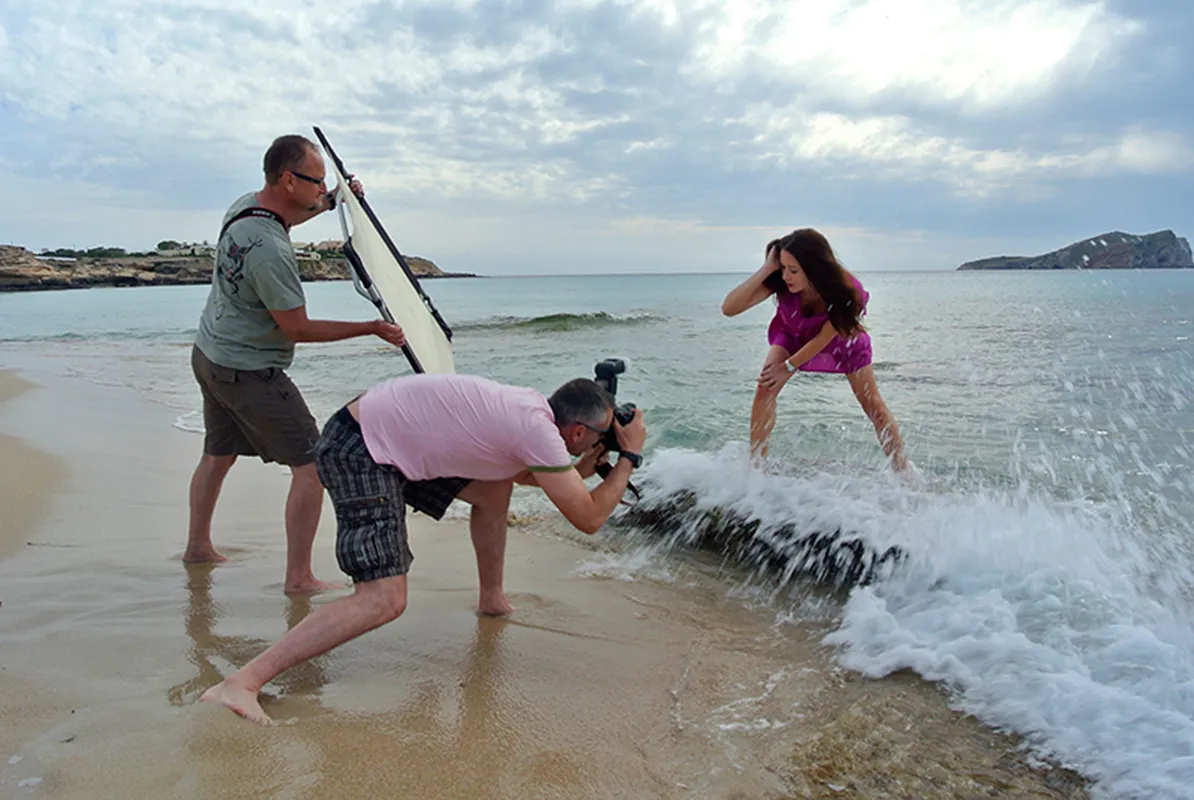
(Photo © Jens Brüggemann - www.jensbrueggemann.de)
Through model sharing
Model sharing means splitting the model's fee (and possibly other costs such as studio rent for rental studios or location fees for other locations) between several photographers.
In my opinion, model sharing always has a bit of "stinginess" attached to it, because when photographers "share" a model, this means that - in order to save money - they make compromises in the collaboration, which is inevitably less intensive than with an individual shoot (where the ratio of photographers to models is 1:1).
However, model shoots are suitable for an initial introduction and to see how well the model in question performs in front of the camera.
By word of mouth
Word of mouth is the best way for photographers to get new models. However, word of mouth cannot be controlled, as the photographer himself cannot actively pursue it. It is not up to the photographer to decide when the models will contact them. Word of mouth is therefore not suitable for casting models for a specific shoot.
The photographer can only do a good job and hope that his satisfied customers (and the models) are so enthusiastic about his work that they recommend him to others.
Figure 3.11: Tiana came to me through word of mouth. I had photographed a friend of hers at the time and the results were very well received by both the model and her friends, so Tiana finally took the plunge and applied to me as a model.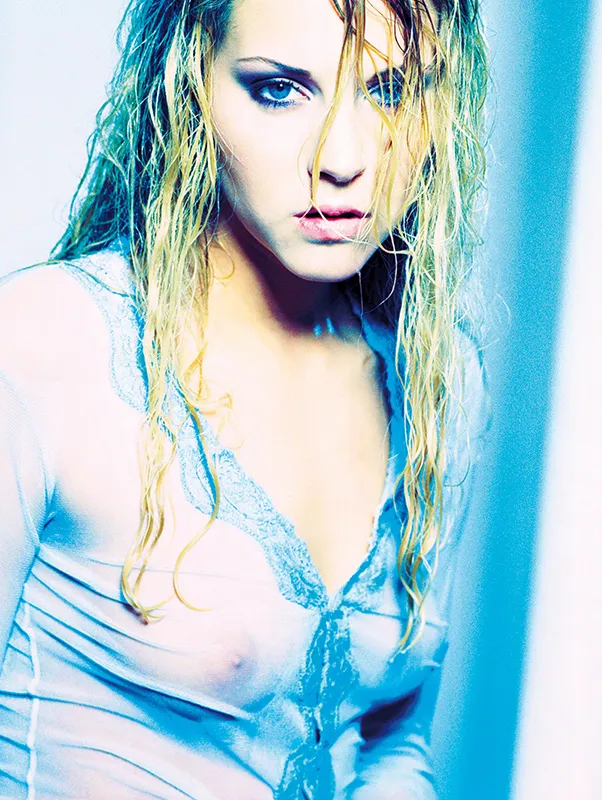
(Photo © Jens Brüggemann - www.jensbrueggemann.de)
Note: The next part of this tutorial series is about finding unusual, effective or at least suitable locations for the model photo shoot. It is important that the location matches the image idea. Sometimes, however, the location has such a big influence on the image idea that it results (at least in part) from the choice of location. Think of a western town backdrop, for example: If photos are to be taken there, the photographer will definitely not choose the themes "inline skaters", "damsels", "cars & girls" or "hip hop" ...
